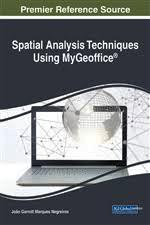 |
Spatial Analysis Techniques Using MyGeoffice® (IGI Global Press, USA, 2017) is a georeference source for the latest academic material on emerging software developments for the exploration of spatial data and its various applications. Including a range of topics such as digital image processing, spatial autocorrelation, sthocastic interpolation and simulation, geographical weighted regression point and event analysis, deterministic interpolation and exploratory data analysis, this book is ideally designed for researchers, academics, students and practitioners seeking geographical analysis. |
|---|---|
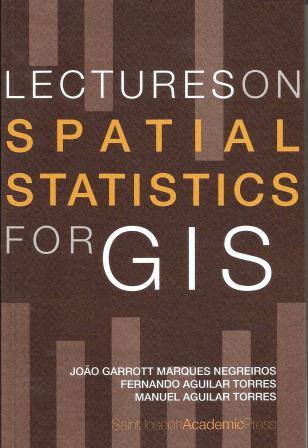 |
According to Wikipedia (2011), spatial statistics includes any of the formal techniques which study entities using their topological, geometric or geographic properties. Complex issues arise in this field, many of which are neither clearly defined nor completely resolved, but form the basis for current research. This writing (ISBN 978-99937-734-6-7, SaintJosephAcademicPress, 207 pages, 2011) aims to present a set of research articles of spatial statistics for Geographical Information Systems (GIS) users. Its content is based on twelve papers presented in different international conferences for the last years and covering several topics such as spatial autocorrelation indexes, geographical weighted regression, spatial interpolation and simulation methodologies, GIS for an Internet environment, the use of X3D for 3D space objects and Web interactivity with static images. Due to length of "Lectures on Spatial Statistics For GIS" PDF file (3.1 MG) and the Web host space restriction policies of my present home page, please send me an email (joao.garrot@usj.edu.mo) to download it for free. |
The need to update Geography and GIS curriculum regarding stochastic issues has been crucial since major universities do not cover, at least, part of these issues. To fill this hole is a major aim. To introduce to common people these Earth science subjects are, quite certainly, the foremost goal. Therefore, this 165 pages book (ISBN 58-000-659-314-25, Lulu Press, 2011) comprises six sections: (A) Spatial Autocorrelation measures; (B) Spatial Deterministic Interpolators; (C) Ordinary and Indicator Kriging; (D) Academic Case Study; (E) Morphologic Geostatistics, Conditional Sequential Simulation, GWR and Spatial Residuals; (F) Spatial Analysis: Current Implementation Frameworks. Due to length of "Spatial Statistics for Special Data" PDF file (7.6 MG) and the Web host space restriction policies of my present home page, please send me an email (joao.garrot@usj.edu.mo) to download it for free. |
|
 |
This electronic book (2010) published at www.myebook.com aims to focus on system computational analysis with UML (Unified Modeling Language). This 208 pages ebook is divided into six modules and one appendix with the following content: 1) Introduction to UML and Object Oriented Programming (OOP), general concepts of C# and .Net platform. 2) Unified Modeling Language: Use Cases, Classes, Sequence, State, Deployment and Instalation. 3) Unified Modeling Language: Theoretical Revision and Further Details. 4) Unified Modeling Language: Four Study Cases 5) Unified Modeling Language: Additional Three Study Cases 6) The particular CASE Tool of Power Design?/p> 7) Appendix |
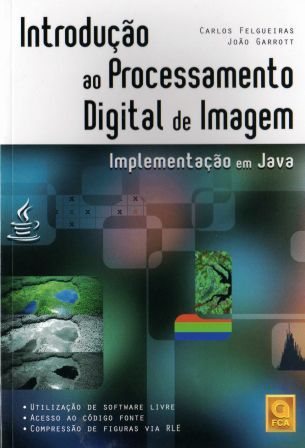 |
This book (2008) aims to focus on the first step of digital image computation. Hence, these are the topics that are covered: 1) Introduction to Java platform. 2) Fundamentals of theoretical concepts. 3) The role of statistics in Digital Image Processing. 4) Linear and non-linear enhancement of images. 5) Logical and arithmetical operations between figures. 6) Application of filters and RLE compression. Press here to obtain all pedagogical support of this book (http://www.fca.pt). |
|---|
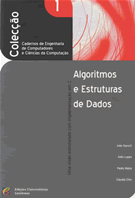 |
In the first chapter, a C language review is accomplished in a practical way. This includes bitwise operators, files access, creation of functions, arrays, structures, unions and dynamic memory allocation. Regarding the following seven chapters, a deep inner view is made through a range of subjects such as queues, stacks, file compression (Huffman and LZ77), encrypted methods, data sort (bubble, shell, heap, merge, quick sort) and search algorithms (sequential, binary, hashing, trees, AVL), graphs theory, Floyd and Dijsktra techniques and other generic procedures (UNIX client-server, fractals...). Send an email (joao.garrot@usj.edu.mo) to obtain all pedagogical support of this book (2007). |
|---|
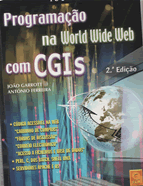 |
The following subjects are covered in this book (1999): 1) Basic concepts of HTML, TCP/IP, URLs and CGIs specifications. 2) Search engines, Server Side Includes, CGIs versus Forms, Emails and Imagemaps. 3) References to Perl, C, DOS Batch files, UNIX Shell scripts, security and cookies 4) Databases (Windows environment via ASPs) and ASCII files (UNIX environment through C language) access 5) From discussion forums and shopping basket techniques to Java, JavaScript e VRML themes 6) Apache Web Server and Internet Information Server configuration |
|---|
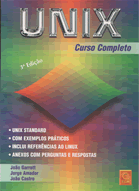 |
This book (1998) is suitable to administrators and common users that it looks for to work with UNIX operating system. It includes: 1) To manage users, to monitories system overall performance and to create backups and perform restores 2) To setup network, periphericals and UNIX Kernel 3) To install software and to program shell scripts 4) To start and to shutdown the system 5) To update user environment profile and to account all its resources (http://www.fca.pt). |
|---|